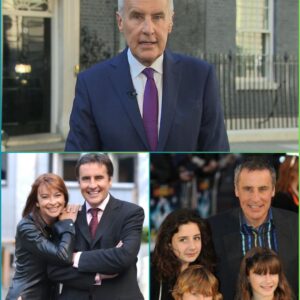New research suggests the Chelmno group followed their water burials with mass deposits of bronze jewelry and artifacts
:focal(640x482:641x483)/https://tf-cmsv2-smithsonianmag-media.s3.amazonaws.com/filer_public/6c/a2/6ca22f93-1a98-4063-9f06-0f7041769334/urn_cambridgeorg_id_binary-alt_20240117101800-47642-optimisedimage-png-s0003598x23001989_fig3.jpeg)
An excavation of the dry Papowo Biskupie lakebed unearthed over 550 bronze artifacts. A. Piasecka / Antiquity Publications Ltd.
Researchers have determined that a hoard of bronze jewelry found in a Polish lakebed may be related to ancient ritualistic water burials.
Metal detectorists discovered the jewelry last year at Papowo Biskupie, the site of a long dried-up lake in Poland. In the excavations that followed, researchers recovered over 550 bronze artifacts, as well as human bones—making the site “one of the most eloquent testimonies of ritual activity from the Lusatian period in Poland,” according to a study published this week in the journal Antiquity.
Between 1200 and 450 B.C.E., the site was occupied by the Chełmno group, a faction of a larger northern European culture called the Lusatian population, which was active during the late Bronze and early Iron Age, according to the researchers. Previously, historians knew that other Lusatian groups used metal for ritualistic purposes, but the Chelmno group wasn’t thought to have engaged in this practice—until the recent findings at Papowo Biskupie.
/https://tf-cmsv2-smithsonianmag-media.s3.amazonaws.com/filer_public/e9/32/e9323407-ef74-4d86-8d91-435c21c183a7/urn_cambridgeorg_id_binary-alt_20240117101800-02810-optimisedimage-png-s0003598x23001989_fig4.jpeg)
A recreation of a multistrand necklace, complete with beads and charms, found at the site A. Fisz / Antiquity Publications Ltd.
“The scale of metal consumption at the site is extraordinary,” study co-author Łukasz Kowalski, an archaeologist at the AGH University of Science and Technology in Krakow, tells Live Science’s Jennifer Nalewicki. “Until now, we thought that metal was a weak partner in the social and ritual strategies of the Chełmno group, in contrast with the metal-hoarding madness [practiced by the other Lusatians].”
Researchers also recovered skeletal remains from at least 33 human bodies—including infants, children, adolescents and adults—in the lakebed. After conducting radiocarbon testing, they determined the bones date to between 1040 and 780 B.C.E.
The trove of artifacts found at the site includes arm and neck accessories, such as a necklace made with oval- and tube-shaped beads and “swallow-tail pendants,” write the researchers, who think many of the metal pieces were made by locals. However, a glass bead from the same necklace appears to have traveled a longer distance, offering new insights into the community’s participation in trade.
“The bead is made of low-magnesium glass that was sourced from the Eastern Mediterranean region,” Kowalski tells Live Science. “This increases the use of evidence that power-elites of the Chełmno group became parties to a metal trading network that connected much of the European continent in the first millennium B.C.E.”
/https://tf-cmsv2-smithsonianmag-media.s3.amazonaws.com/filer_public/f7/26/f7267e1b-692f-4c41-98bc-489997d331e7/urn_cambridgeorg_id_binary-alt_20240117101800-65465-optimisedimage-png-s0003598x23001989_fig5.jpeg)
Researchers created this example of a Chełmno woman’s burial using the jewelry found at the site. A. Fisz / Antiquity Publications Ltd.
Radiocarbon dating suggests that the metal jewelry was buried in the lake sometime after the bodies. According to a Facebook post from Antiquity, this gap sheds light on a cultural shift within the Chelmno group: The community may have first buried only bodies in the lake, later adding the metal as they adopted new traditions.
“While the Chelmno group differed in many ways from others in Lusatian culture, it seems the ritual practices and their belief system aligned later on,” writes Newsweek’s Robyn White.
The researchers completed their study with illustrations imagining what a Chelmno woman’s burial might have looked like. In one of these images, she is seen lying down with her head turned to the side, adorned with some of the metal jewelry recovered from the site.





